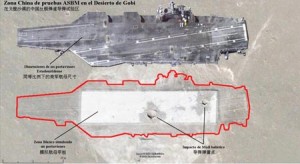
Before his appointment as U.S. Secretary of Defense, concerns existed that Chuck Hagel was a proponent of the massive cuts envisioned for the DoD as part of Sequestration. With his Statement on Strategic Choices and Management Review (SCMR) (31/07/13), the Secretary has made it very clear that he is no bedfellow of austerity.
Followers of security policy have already drawn out two possible paths from the Secretary’s words. However, the real thrust of the speech was that these were not options, as he sums up in his closing:
The inescapable conclusion is that letting sequester-level cuts persist would be a huge strategic miscalculation that would not be in our country’s best interests…
It is the responsibility of our nation’s leaders to work together to replace the mindless and irresponsible policy of sequestration. It is unworthy of the service and sacrifice of our nation’s men and women in uniform and their families. And even as we confront tough fiscal realities, our decisions must always be worthy of the sacrifices we ask America’s sons and daughters to make for our country.”
At multiple points within his piece, the Secretary reiterates that Sequestration cuts are not only damaging, but roughly impossible:
The review showed that the “in-between” budget scenario we evaluated would “bend” our defense strategy in important ways, and sequester-level cuts would “break” some parts of the strategy, no matter how the cuts were made. Under sequester-level cuts, our military options and flexibility will be severely constrained…
Unlike the private sector, the federal government, and the Defense Department in particular – simply does not have the option of quickly shutting down excess facilities, eliminating entire organizations and operations, or shutting massive numbers of employees – at least not in a responsible, moral, and legal way…
In closing, one of the most striking conclusions of the Strategic Choices and Management Review is that if DoD combines all the reductions I’ve described, including significant cuts to the military’s size and capability – the savings fall well short of meeting sequester-level cuts, particularly during the first five years of these steep, decade-long reductions.”
That is to say, even if we break the back of our armed forces, we still fall short of the required austerity. The original intent of Sequestration, as an “impossible scenario,” is unfortunately coming to pass – not in possibility but in functionality.
The reality is that the real portion from which the cuts must come is the compensation that consumes “roughly half of the DoD budget,” but even then…
The efficiencies in compensation reforms identified in the review – even the most aggressive changes – still leave DoD some $350 billion to $400 billion short of the $500 billion in cuts required by sequestration over the next ten years. The review had to take a hard look at changes to our force structure and modernization plans.”
The most worrisome reality check laid down by the Secretary is that if Sequestration is not rescinded for DoD, the reforms suggested will require the agreement of a recalcitrant Congress that was more than willing to execute Sequestration, but unwilling to bear the political consequences of the actions they’ve forced. Most likely, that scenario will only lead us deeper down the strategically damaging rabbit-hole:
These shortfalls will be even larger if Congress is unwilling to enact changes to compensation or adopt other management reforms and infrastructure cuts we’ve proposed in our Fiscal Year 2014 budget. Opposition to these proposals must be engaged and overcome, or we will be forced to take even more draconian steps in the future.”
The Secretary has not, through the SCMR’s response to Sequestration, put down a viable plan for the future. He has set down a warning of what is to come. Let us hope that warning is heeded.
Matt Hipple is a surface warfare officer in the U.S. Navy. The opinions and views expressed in this post are his alone and are presented in his personal capacity. They do not necessarily represent the views of U.S. Department of Defense or the U.S. Navy.






